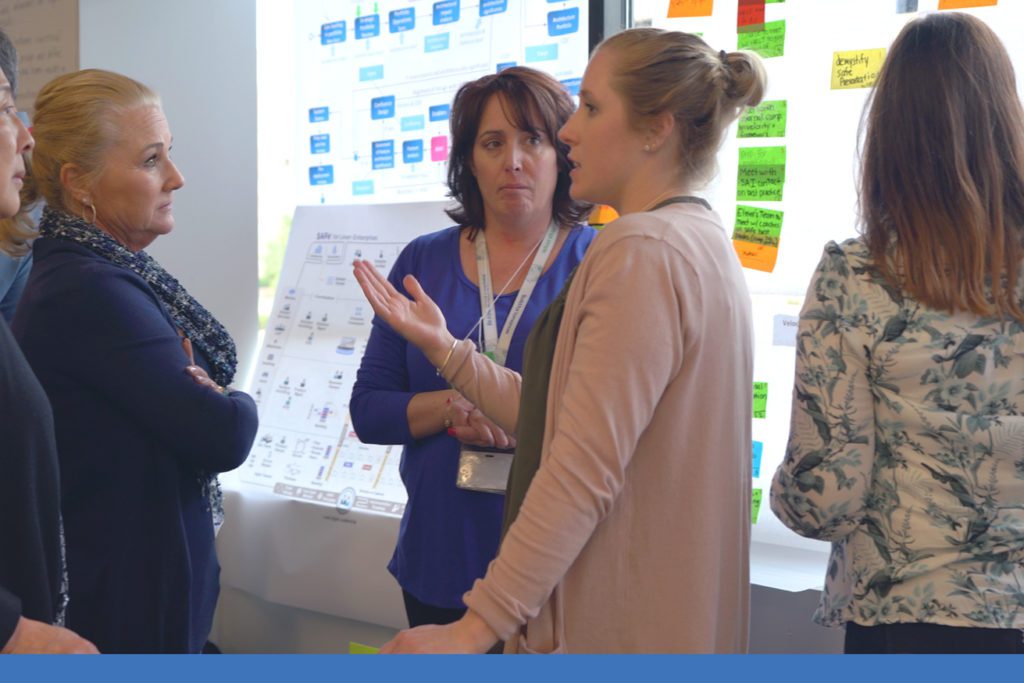
There are few sentences more toxic to a workplace than, “That’s the way we’ve always done it.” A marketing team is often tasked with ongoing maintenance work that must be done. Updating a webpage, a piece of collateral, or a social feed can often feel like everyday, run-of-the-mill work that rarely gets seen or appreciated. It just sort of runs in the background and quietly eats away at the work day. As a result, this unappreciated, untracked work usually gets thrown into an ever-expanding pile of just-get-it-done tasks that mandate no thought and no context. Before you know it, someone’s asking why we do it at all, and that toxic answer resurfaces: “That’s the way we’ve always done it.”
To me, this answer is a symptom of the larger problem. Born out of years of repetitive tasks that never see the organizational light of day. We always do it that way because we’ve never had the time to closely examine our process. Or, it’s been so long that literally no one can remember why those decisions were made in the first place.
Agile marketing provides multiple tools to marketing leaders to help focus their teams’ efforts. Our goal is to never just eliminate business as usual (BAU) work; just make sure it’s the right one. This was the challenge I faced when I recently took over an agile marketing team. How could I leverage the Scaled Agile Framework® (SAFe®) to make sure we’re doing the right work to keep the ART on track, rather than just busywork? Luckily, agile marketing gave me a few tools I never had before in previous marketing leadership roles. I have visibility into and clarity around the work that had never existed before, and my team has reaped the benefits.
Data: It’s not just for open rates anymore
Agile preaches that all work should be visible. But as previously stated, BAU work rarely is. Being an agile team that leverages a Kanban board to visualize the flow of work getting done, we made a small tweak. We tagged every user story that fit the description of BAU. Voilà! I could now pull clean reports on exactly what type of BAU we were working on, what percent of our time we were dedicating to it, and who on the team it affected the most.
We found that we were spending a staggering 31 percent of our time on BAU! And as we examined more closely, we found many people had no idea why we were working on these things at all. It was just the way we had always done it.
Most importantly, the ART and the team had no idea just how much time all this work was taking. No one had ever calculated it. By taking a data-driven approach to the issue of BAU, we did something crazy: We timeboxed it.
Capacity allocations
There are only so many hours in a day and any good leader wants to make sure their team is getting the top-priority things across the line. Our goal is not to eliminate BAU work, but to ensure it’s the right work. By following agile marketing practices we can calculate exactly how much we can accomplish in a two-week iteration. Leveraging ‘capacity allocation’ helps marketing leaders limit BAU’s ability to derail the priorities.
And that’s exactly what we did. Our team allocates 20 percent of our available time to deal with BAU work like website maintenance, monthly newsletters, and updates to graphics. This creates a forcing function in evaluating BAU. Is this BAU user story more important than another one? To answer that question, team members have to fully understand the work and the product owner (PO) has to understand the customer’s needs. If no one understands why they’re working on something, they shouldn’t be working on it.

Hypothesis-driven development
Marketers love a good A/B test. It’s short and simple. But harder, more in-depth questions like “Does this webpage provide value to the reader?” take more effort and thought. When evaluating BAU, we found we needed to develop some muscle memory around answering these harder questions. And we wanted something more defensible than our personal opinions.
To do this, we’ve introduced an agile marketing concept called hypothesis-driven design. Essentially, it means you develop a testable hypothesis and the experiment to validate or falsify it. In other words, you leverage the scientific method to evaluate your work.
After the team took the Agile Marketing with SAFe® course, we began to apply hypothesis-driven design to our website and our underperforming monthly newsletters. This won’t come as much of a surprise to marketing professionals, but we found we’re pretty good at designing tests; not so great at writing hypotheses that can be tested. Introducing hypothesis-driven design was a meaningful step toward building more intention into our BAU work.
So what happened?
Since adopting these practices, our team has seen a 42 percent decrease in capacity spent on BAU. This work is being turned into productive, value-delivering efforts that support the ART’s overall go-to-market strategy.
By leveraging agile marketing we’re no longer just busy: We’re busy delivering value.
About Hannah Bink

Hannah Bink heads the Marketing Success team at Scaled Agile. She has nearly 15 years of B2B marketing experience and studied business at Pennsylvania State University. Prior to Scaled Agile, Hannah spent the majority of her career in telecommunications and healthcare sectors, running global marketing divisions. She is also author of the “Musings of a Marketeer” blog, and lives in Denver, Colorado.
Share:
Back to: All Blog Posts
Next: What is SAFe? Eight Facts About the Scaled Agile Framework That You Should Know.